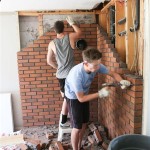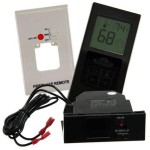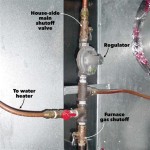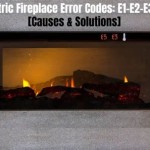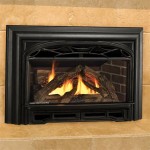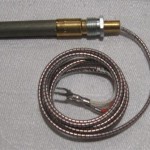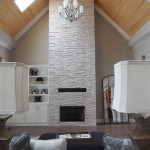Hot Air Blowers for Fireplaces: Enhancing Heat Circulation and Efficiency
Fireplaces have long been a cherished feature in homes, providing warmth and ambiance during colder months. While fireplaces offer radiant heat directly in front of them, their efficiency in heating an entire room can be limited. A significant amount of heat often escapes up the chimney, reducing the overall heating effectiveness. To combat this, hot air blowers have emerged as a valuable accessory, designed to improve fireplace heat circulation and distribution, thereby potentially increasing the heating efficiency of a fireplace.
A hot air blower, also known as a fireplace blower or a fireplace fan, is a device that forces air around and through a fireplace to extract and circulate the heat that would otherwise be lost. These blowers are typically installed at the base of the fireplace, either within the firebox itself or in a cavity designed for this purpose. The primary function is to pull cool air from the room, pass it over the heated surfaces of the fireplace, and then expel the warmed air back into the room. This process helps to distribute the heat more evenly and efficiently than radiant heat alone can achieve.
The Mechanics of a Hot Air Blower
The core component of a hot air blower is the fan itself. This fan is usually electrically powered and designed to move a substantial volume of air quietly. The fan motor can be either a centrifugal (squirrel cage) or an axial fan, each with its own advantages and disadvantages. Centrifugal fans are generally quieter and more efficient at producing high pressure, making them suitable for ducted systems or installations where the airflow path is restricted. Axial fans, on the other hand, are typically more compact and can move a large volume of air at lower pressure, making them suitable for open fireplaces.
The blower housing is designed to direct the airflow optimally. It guides the cool air intake, ensures maximum contact with the heated surfaces of the fireplace, and directs the warmed air back into the room. Materials used for the housing are typically heat-resistant metals, such as steel or aluminum, to withstand the high temperatures within the fireplace environment.
Effective hot air blowers also incorporate safety features. Overheat protection is crucial to prevent the blower motor from overheating and potentially causing a fire hazard. This is often achieved through a thermal sensor that automatically shuts off the blower if the temperature exceeds a safe limit. Some models also include variable speed controls, allowing users to adjust the airflow and heat output according to their preferences and the room's heating needs.
Installation of a hot air blower typically involves mounting the unit in the designated space within the fireplace, connecting it to a power source, and securing any necessary ductwork. Some models are designed for easy DIY installation, while others may require professional installation, particularly if electrical wiring modifications are needed.
Benefits of Using a Hot Air Blower
The primary benefit of using a hot air blower is improved heat circulation. Without a blower, the majority of heat generated by the fireplace rises directly up the chimney. A blower redirects this heat, forcing it into the room and creating a more uniform temperature distribution. This can significantly reduce cold spots and improve overall comfort, especially in larger rooms or open-plan living spaces.
Increased heating efficiency is another significant advantage. By capturing and circulating heat that would otherwise be lost, a hot air blower can potentially reduce the amount of fuel needed to maintain a comfortable room temperature. This can translate to cost savings on heating bills over time, especially for those who rely on their fireplace as a primary or supplemental heating source.
Many users also appreciate the enhanced control offered by hot air blowers. Variable speed controls allow users to fine-tune the heat output, ensuring that the room is neither too hot nor too cold. This level of control can be particularly useful during periods of fluctuating outdoor temperatures or when the fireplace is used for extended periods.
A further advantage is the relatively simple integration. Many fireplaces are designed with built-in blower compartments, making the installation process straightforward. Even for fireplaces without dedicated compartments, aftermarket blower kits are available that can be adapted to fit most models. The low power consumption of most blowers is also a benefit, typically using only a small amount of electricity to move a significant volume of air.
Furthermore, the use of a hot air blower can contribute to a more sustainable heating solution. By maximizing the heat output from each fire, users can potentially reduce their reliance on other heating systems, such as furnaces or electric heaters. This can lower overall energy consumption and reduce the environmental impact associated with heating homes.
Considerations When Choosing a Hot Air Blower
Selecting the right hot air blower for a fireplace requires careful consideration of several factors. The size and type of fireplace are primary determinants. Larger fireplaces will require blowers with higher airflow capacity to effectively circulate heat. The design of the firebox and the availability of a dedicated blower compartment will also influence the choice of blower.
Noise level is another important factor to consider. Some blowers can be quite noisy, which can be disruptive and detract from the ambiance of the fireplace. Look for models that are specifically designed for quiet operation, often featuring centrifugal fans and sound-dampening materials. Reading user reviews and comparing noise level ratings can help in making an informed decision.
The blower's airflow capacity, measured in cubic feet per minute (CFM), should be appropriate for the size of the room being heated. A blower with insufficient CFM will not effectively circulate heat, while a blower with excessive CFM may create drafts and discomfort. Consulting with a fireplace professional or using online calculators can help determine the optimal CFM for a specific room size.
Durability and reliability are also crucial considerations. Look for blowers made from high-quality materials and backed by a warranty. Check user reviews for reports of common problems or premature failures. Investing in a reputable brand with a proven track record can help ensure long-term performance and satisfaction.
The ease of installation and maintenance should also be taken into account. Some blowers are designed for easy DIY installation, while others may require professional installation. Regular maintenance, such as cleaning the fan blades and checking for any obstructions, is necessary to ensure optimal performance and prolong the life of the blower. Access to the blower for maintenance purposes should be relatively straightforward.
Finally, consider the power consumption of the blower. While most blowers use relatively little electricity, it is still a factor to consider, especially for those who use their fireplace frequently. Look for models with energy-efficient motors and variable speed controls to minimize power consumption.
In summary, a hot air blower can be a valuable addition to a fireplace, improving heat circulation, increasing heating efficiency, and enhancing overall comfort. By carefully considering the factors outlined above, homeowners can select the right blower for their needs and enjoy the benefits of a more efficient and enjoyable fireplace experience.

How Does A Fireplace Blower Work Learn About Blowers

Fireplace Blowers Explained How Fans Work Regency

Fireplace Blower Fans What You Need For Heat Full Service Chimney

High Quality Curtain Silent Wood Fireplace Fashion Hot Air Blower For Home Appliance China Cross Flow Fan Made In Com

High Quality Curtain Silent Wood Fireplace Fashion Hot Air Blower For Home Appliance China Cross Flow Fan Made In Com

Colossus 8 Blade Dual Head Heat Powered Fireplace Wood Fan Mini Furnace Air Blower Com

Why Should I Get A Fireplace Blower For My Masonry

High Quality Curtain Silent Wood Fireplace Fashion Hot Air Blower For Home Appliance China Cross Flow Fan Made In Com

Gas Fireplace Blower Vs No What S Best For You Dreifuss Fireplaces

Us Stove Miracle Heat Blower Mh6 The Home Depot
Related Posts

